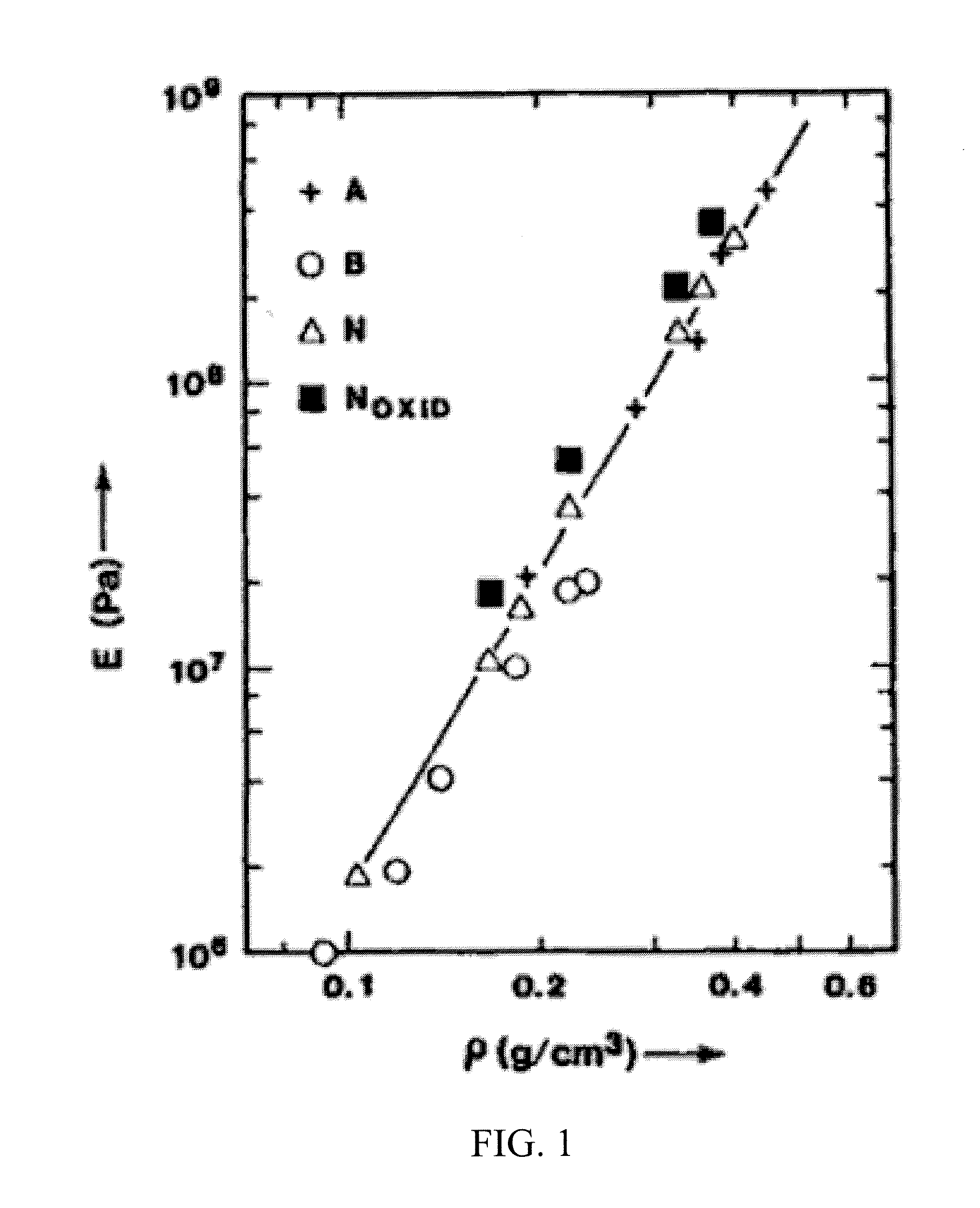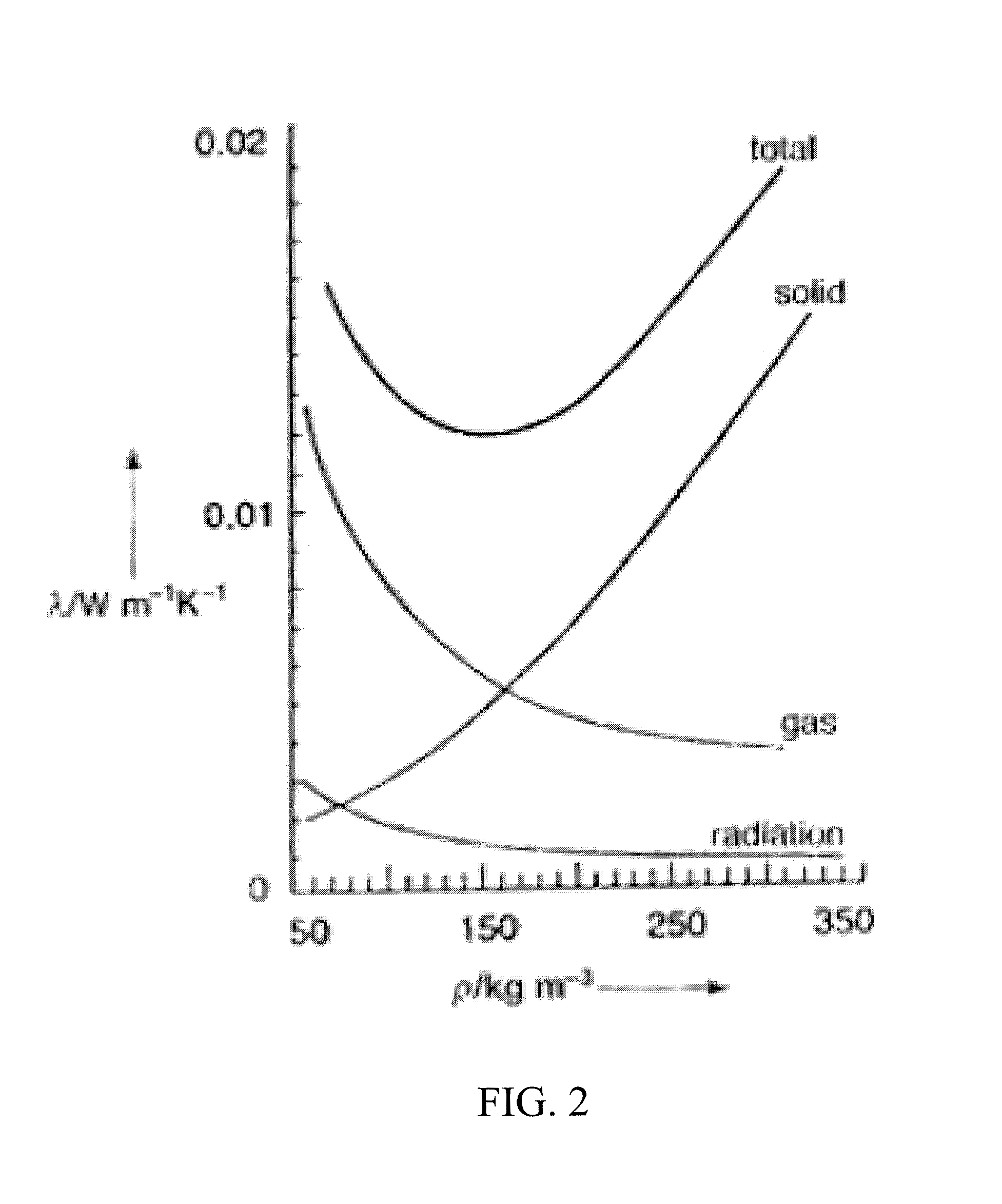Silica aerogels and their preparation
a technology of silica aerogels and aerogels, which is applied in the field of chemical synthesis, can solve the problems of low compressive/tensile strength and elastic modulus of silica aerogels
- Summary
- Abstract
- Description
- Claims
- Application Information
AI Technical Summary
Benefits of technology
Problems solved by technology
Method used
Image
Examples
example 1
Two-Step Sol-Gel Process
[0128]In the first set of experiments, silica aerogels (sample N-1-0-0 and F-1-0-0) were prepared through a 2-step method sol-gel process. In this experiment set, for the first step, the precursor solution was placed for hydrolysis with substoichiometric water under acid condition for 1.5 h with the molar ratios of starting materials TEOS:EtOH:H2O:H+ were kept at 1:3:1:7×10-4. During the second step, additional EtOH and water were added to increase the ratio to TEOS EtOH:H2O=1:8:4. After that, 1 ml ammonia solution (2M) or 1 ml ammonium fluoride (1M) was added to induce condensation and gelation for sample N-1-0-0 or F-1-0-0 respectively.
example 2
Three-Step Sol-Gel Process
[0129]In the second set of experiments, silica aerogels (sample F, N, 0.01-8E-0-0, F, N, 0.01-12E-0-0, F, N, 0.01-16E-0-0, and F, N, 0.01-20E-0-0) were prepared through a 3-step method sol-gel process. In this experiment set, the first step is the same as described in the first set of experiments, but during the second step, additional EtOH, water and ammonia solution were added to increase TEOS:EtOH:H2O:NH3.H2O=1:8 (12, 16, or 20):4:2×10-3, stirring for 0.5 h. For the third step, 1 ml ammonium fluoride (1M) was added as gelation agent and sol solutions were poured into molds before gelation point.
example 3
Second 3-Step Sol-Gel Process
[0130]In the third set of experiments, silica aerogels (sample F, N, 0.002-16E-0-0, F, N, 0.004-16E-0-0, F, N, 0.006-16E-0-0, F, N, 0.008-16E-0-0, and F, N, 0.01-16E-0-0) were prepared through a 3-step method sol-gel process. In this experiment set, the first step is the same as described in the previous, and during the second step, additional EtOH, water and ammonia solution were added to increase TEOS:EtOH:H2O:NH3.H2O=1:16:4:2×10-3, with stirring for 0.5 h. For the third step, 1 ml ammonium fluoride 0.2M (0.4M, 0.6M, 0.8M, or 1M, respectively) was added as gelation agent and sol solutions were poured into molds before gelation point.
PUM
| Property | Measurement | Unit |
|---|---|---|
| Pore size | aaaaa | aaaaa |
| Pore size | aaaaa | aaaaa |
| Pore size | aaaaa | aaaaa |
Abstract
Description
Claims
Application Information
 Login to View More
Login to View More - R&D
- Intellectual Property
- Life Sciences
- Materials
- Tech Scout
- Unparalleled Data Quality
- Higher Quality Content
- 60% Fewer Hallucinations
Browse by: Latest US Patents, China's latest patents, Technical Efficacy Thesaurus, Application Domain, Technology Topic, Popular Technical Reports.
© 2025 PatSnap. All rights reserved.Legal|Privacy policy|Modern Slavery Act Transparency Statement|Sitemap|About US| Contact US: help@patsnap.com



